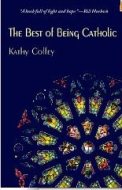On this day in 1610, Italian Jesuit Matteo Ricci died in Beijing and was the first Westerner honored with burial in the capital. His story is an intriguing one of openness to another culture, of asking how one could ever bring the gospel to someone they didn’t know. His “friendly conversation” style of evangelizing makes all the other efforts of his era seem clumsy, intrusive, disrespectful and violent.
Sent to China in 1583, he spent 15 years becoming proficient in the language, learning Confucianism, Chinese customs, literature and etiquette. A scholar of mathematics, astronomy, philosophy and geography, he dressed in appropriate silk robes like other mandarins. His world map astonished and impressed the Chinese, who were unaware of other lands beyond their own. Ricci believed that the 4000 year old tradition of China converted him. Despite maintaining armies, the Chinese didn’t wage wars of aggression, in contrast to European nations consumed with the idea of domination.
Furthermore, Ricci worked out a synthesis of Confucianism and Christianity, and adapted liturgy to the Chinese style. Today it’s called “inculturation”; then it was mind-blowing. Throughout the age of discovery, the track record of Christian missionaries was abysmal: baptism by force, widespread slaughter, alliance with military rule. How might it have been different if Ricci’s attitude prevailed: enter lands new to Europeans, housing other cultures, with wonder and appreciation, curious about what westerners could learn? Instead of branding native peoples “savages,” and plundering the resources of their lands, missionaries could’ve acted on the Christian belief that the indigenous, like all humanity, held the spark of God within, and respected the beauties of God’s creation in uncharted terrains.
It’s probably no surprise that the Vatican, epitome of a “closed system” hostile to new ideas, condemned Ricci’s efforts in 1704 and more vehemently in 1742. They seemed especially troubled by filial respect to ancestors and called the rites to honor the dead superstitious and idolatrous. Ironic, in a church with a long history of honoring its saints and founders, erecting statues to them in every church. But Robert Ellsberg describes the prevailing attitude in All Saints: “When in China, do as the Romans.” What underlying fears of difference motivate such arrogance? Whatever happened to the deep security of the beloved child of God, curious about God’s varied creations?
Several centuries later, a similar scenario recurred. French Jesuit Pierre Teilhard de Chardin, a respected scholar, paleontologist and geologist was sent to China because his creative ideas ruffled hierarchical feathers. There, he made marvelous discoveries and happily worked with native scientists. The Vatican forbade him to publish, suppressing his writing as they had in 1704 shut down a fresh infusion of eastern ideas that could have enhanced western spirituality.
In the complex and lengthy process of naming someone a Catholic saint, Ricci reached the stage called “Venerable,” or close to the finish line, in 2022. It took only 412 years for the Vatican to recognize him, but perhaps one should be grateful they reached this point at all. When oh when will they canonize St. Teilhard?

